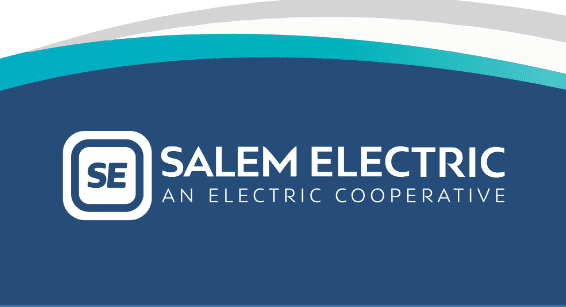Table of Contents
- 1 What is a semiconductor?
- 1.1 How do semiconductors work?
- 1.2 What is the difference between N-type and P-type semiconductors?
- 1.3 What is a semiconductor chip?
- 1.4 What is an RF semiconductor?
- 1.5 What is a semiconductor optical amplifier?
- 1.6 Effect of Impurities
- 1.7 This vastly changes the parcels.
- 1.8 Holes & electrons in semiconductors
- 1.9 What is a fable semiconductor?
- 1.10 Materials list
- 2 Contact Us
- 3 Methodology
- 4 People Also Search
- 5 FAQ
What is a semiconductor?
A semiconductor is a substance that has specific electrical parcels that enable it to serve as a foundation for computers and other electronic biases.
It’s generally a solid chemical element or emulsion
that conducts electricity under certain conditions but not others.

This makes it an ideal medium to control electrical current and everyday electrical appliances.
A substance that can conduct electricity is called the captain
and a substance that can not conduct electricity is known as the insulator.
Semiconductors have parcels that sit between the captain and the insulator.
A diode, integrated circuit( IC), and transistor are all made.
The conductance can vary depending on the current or voltage applied to a control electrode
or on the intensity of irradiation by infrared( IR), visible light, ultraviolet, or X-rays.
The specific parcels of a semiconductor depend on the contaminations– known as dopants– added to it.
How do semiconductors work?
Utmost semiconductors are composed of chargers made of several accouterments.
To understand how to work, druggies must understand titles and how electrons organize themselves within the snippet.
Electrons arrange themselves in layers called shells inside a snippet.
The remotest shell in the snippet is known as a valence shell.
The electrons in this valence shell are the bones that form bonds with bordering titles.
similar bonds are called covalent bonds.

Utmost operators have just one electron in the valence shell. Semiconductors, on the other hand, generally have four electrons in their valence shell.
Still, if titles hard are made of the same valence,
electrons may bind with the valence electrons of other titles.
Whenever that happens, titles organize themselves into crystal clear structures.
We make most with similar chargers, substantially with silicon chargers.
What is the difference between N-type and P-type semiconductors?

An N-type semiconductor carries current substantially in the form of negatively charged electrons analogous to the conduction of current in a line.
A P-type carries current generally as electron scarcities called holes.
A hole has a positive electric charge, equal to and contrary to the charge of an electron.
In It material, the inflow of holes occurs in a direction contrary to the inflow of electrons.
essential It includes antimony, arsenic, boron, carbon, germanium, selenium, silicon, sulfur, and tellurium. Silicon is the most stylish known of these, forming the base of utmost ICs.

Common semiconductor composites include gallium arsenide, indium antimonide, and the oxides of utmost essence.
We also extensively use gallium arsenide( GaAs) in low-noise, high-gain, weak-signal amplifying bias.
Its device can perform the function of the original vacuum tube but with hundreds of times its volume.
Like a microprocessor chip, a single IC can do the work of a set of vacuum tubes that would fill a large structure and bear its own electricity-generating factory.
What is a semiconductor chip?

It is a substance that lies between the captain and the insulator.
It controls and manages the inflow of electric current in electronic outfits and bias.
As a result, it’s a popular element of electronic chips made for calculating factors and a variety of electronic biases, including solid-state storehouses.
Visite Website, www.semiconductors.org
What is an RF semiconductor?
A radio frequency( RF) semiconductor is a device used to switch on or amend power in electronic bias.
RF semiconductors work in a radio frequency diapason of about 3KHz up to 300 GHz.
What is a semiconductor optical amplifier?

IT optic amplifier( SOA) is an element set up in semiconductors that amplifies light.
Druggies can find SOAs in optic transceiver modules used to enable communication between data centers.
In this script, the SOA amplifies the optic signal used for Ethernet communication.
This approach helps compensate for transmission loss.
What is the difference between an intrinsic and extrinsic semiconductor?
The primary difference between natural and foreign semiconductors is their form.
For illustration, nature is pure in form and composed of only one kind of material.
They don’t have any form of contamination added to them.
In discrepancy.
Foreign It comprises multiple natural It with other substances added to change their parcels.
These substances generally answer trivalent or pentavalent contaminations.
link: https://www.fiber-optic-solutions.com/
Effect of Impurities
In order to make silicon or any other It into an incompletely conducting material, it’s necessary to add a veritably small quantum of contamination into the material.
This vastly changes the parcels.
If traces of contaminations of accouterments having five electrons in the external ring of their titles are added they enter the demitasse chassis participating electrons with the silicon.
Still, as they’ve one redundant electron in the external ring, one electron becomes free to move around the chassis.
This enables a current to flow if an eventuality is applied across the material.
As this type of material has a fat of electrons in the chassis it’s known as an N-type.
Typical contaminations that are frequently used to produce N-type IT is phosphorous and arsenic.
It’s also possible to place rudiments with only three electrons in their external shell into the demitasse chassis.
When this happens the silicon wants to partake its four electrons with another snippet with four titles.
still, as the contamination only has three, there’s a space or a hole for another electron.
As this type of material has electrons missing it’s known as P-type material.
Typical contaminations used for P-type material are boron and aluminum.
Holes & electrons in semiconductors
It’s easy to see how electrons can move around the chassis and carry a current. still, it isn’t relatively so egregious for holes.
This happens when an electron from a complete route moves to fill a hole,
leaving a hole where it came from.
Another electron from another route can also move in to fill the new hole and so forth.
The movement of the holes in one direction corresponds to a movement of electrons in the other, hence an electric current.
From this, it can be seen that either electrons or holes can carry a charge or an electric current.
As a result, they’re known as charge carriers, holes being the charge carriers for a P-type and electrons for an N-type.
What is a fable semiconductor?
The term fable– not to be confused with semiconductor fab– describes companies that design, manufacture, and vend tackle and semiconductor chips but do not make their own silicon wafers or chips.
Rather, they outsource the fabrication to a foundry or another manufacturing factory.

Materials list
There are numerous different types of semiconductors accouterments that can be used within the electronic bias.
Each has its own advantages, disadvantages, and areas where it can be used to offer optimum performance.
Contact Us
Europe Training Center
De Run 1120-1130
5503 LA, Veldhoven
The Netherlands
+31 40 268 8250
Training-Europe@asml.co
Asia Training Center
Hwa-Ya Technology Park
No. 59, Keji 6th Rd
33383, Kuei-Shan Township, Taoyuan County
Taiwan
+886 331 855 33
Training-ASIA@asml.com
Methodology
IC 50
Asia Supply Chain IC 50( IC 50) is ranked among Asia- grounded, public or private, companies operating along the force chain, including outfits, accouterments, designing, and manufacturing, according to their 12-month financials.
Screening criteria
Surveyed companies in IC 50 are named grounded on their host countries and operating parts.
Companies are from China( including Hong Kong), Japan,
Taiwan, South Korea, Singapore, India, Vietnam, Malaysia, the Philippines, and Thailand.
Named companies are operating in the force chain, including IDM, Foundry, Equipment, Wafers,
Packaging & Test, IC Substrate(including lead frame and other package-related factors), and Fabless.
Companies may be barred from the list due to the following considerations.
A company wholly possessed by a parent with fiscal statements included in
the consolidated statement of the parent company is barred.
Companies operating in It assiduity without independently telling their semiconductor member results are also barred from the ranking.
Financials and ranking
Grounded on intimately available information published before May 1, 2022,
DIGITIMES Asia collects similar 12-month consolidated financials for the rearmost four diggings, two semi-years, or one periodic period of the surveyed companies, inclusive of their accessories.
For the community, surveyed companies’ financial statements are generally between January and December,
indeed for utmost Japan-grounded companies whose financial times run from April 1 to March 31 of the ensuing time.
DIGITIMES Asia also ranks the top 50 companies according to their profit( for companies that induce the utmost of their profit from the semiconductors) or operating income
Supplemented information similar to the operating periphery, net income, and profit periphery is also included.
Read more posts:
People Also Search
| NYSE TSM | NYSE: TSM |
| TSM | Taiwan semiconductor stock |
| tsmc | TSM nyse |
| TSMC stock | taiwan semiconductor stock |
Read More Post :
- mcm digital blackboard
- zito bill pay
- good morning 4k
- georgian blackboard
- leicester university blackboard
FAQ
Is TSMC Chinese or Taiwanese?
A man walks once TSMC’s totem at the company’s headquarters in Hsinchu, Taiwan.
However, the most-advanced chip plant in the world would be rendered” not exploitable,”
TSMC Chair Mark Liu said in an English- language interview with CNN this week that If China were to foray into Taiwan.
Is TSMC the largest chip manufacturer?
New! Click on the discussion bubble to join the discussion Got it!
Taiwan Semiconductor Manufacturing Limited( TSMC) is
the world’s largest contract manufacturer of chips that power our phones, laptops, buses, and fridges.
Does Apple own TSMC?
The report notes that Apple accounts for 25.9 of TSMC’s business. Last time, the chip manufacturer took in$45.51 billion in profit
which means that Apple’s share of that business amounted to$11.4 billion.









